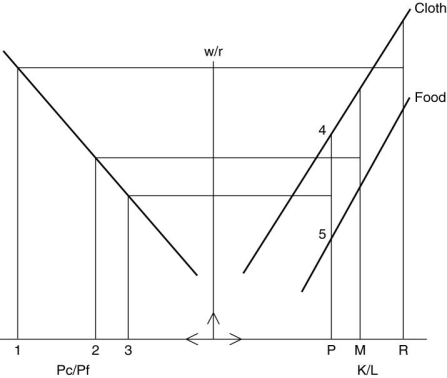
-Refer to above figure. Two countries exist in this model, P and R. P is relatively labor (L) abundant, as is evident in the bottom right horizontal axis. If Country P were to be completely specialized in the labor-intensive product, C, it would be producing at point 4. In fact, it produces both C and P, at point 5. The (autarky) relative price of C (in terms of
F) of Country P is at point 3; and of Country R at point 1. If trade were to open up between these two countries, which would export C and which would export F? Is this consistent with the Heckscher-Ohlin model? Explain.
Definitions:
Straight-Line Method
A method of calculating depreciation or amortization by evenly distributing the cost of an asset over its useful life.
Salvage Value
Salvage value is the estimated resale value of an asset at the end of its useful life, used in determining depreciation amounts.
Retroactive Effect
The Retroactive Effect refers to changes that are applied to past periods or actions, such as changes in accounting policies that affect previous financial statements.
Straight-Line Depreciation
A method of allocating the cost of a tangible asset over its useful life in equal annual amounts.
Q14: In the early 1960s South Korea was
Q34: An increase in a country's net commodity
Q37: As a country begins to liberalize its
Q40: An activity that a customer is willing
Q43: When compared with China, the growth of
Q44: The two-country, multi-product model differs from the
Q48: The European Economic and Monetary Union<br>A) set
Q54: Refer to above figure. In the absence
Q85: Engaging in which of the following will
Q138: Ada National Bank Ada National Bank had